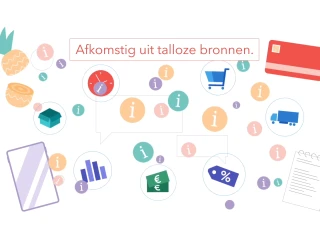
Information silos: every IT manager's challenge
What keeps a CIO up at night? The integration of all his systems and applications. After all, it is important that information systems can “talk” to each other so that information can move freely within (and outside) the organization. Yet the focus is still often on effective collaboration. What is overlooked is the essential role that data plays in this.
Being able to access data is important. But the information employees need to collaborate effectively tends to reside in information silos. So there is limited use of all the data that is available. Moreover, traditional integrations often don't work. Why is that?
- There are isolated systems and applications that are not connected to the rest.
- It is costly and complex which in turn affects the performance of integrations.
- The result is difficult to manage and keep up-to-date. What if processes change or a system is replaced?
It is high time for a secure integration solution that makes quality data readily available for use.




/banner-IT-Integration-4-(1).webp?mode=autocrop&w=320&h=240&attachmenthistoryguid=e6ff0c80-d166-49df-9bd1-5d3a2b948251&v=&focusX=3604&focusY=337&c=e8c87cf258d6e361893ed5eb9f23a09feb32821a4bb2f30350c1404c3a34b4b5)
